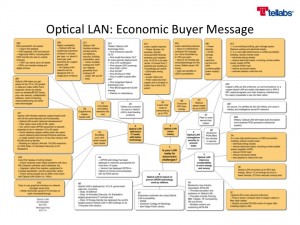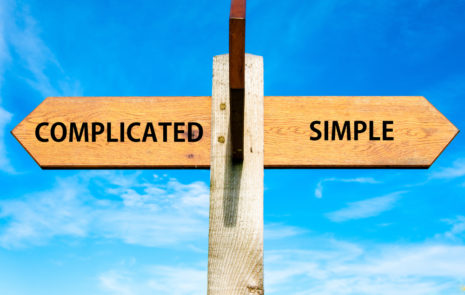
How does content marketing apply to a highly specialized and highly educated audience?
I work with a lot of technology companies. I’m often asked how best to apply content marketing to a highly educated audience with specialized buyers.
We also heard this question from a marketer at Be the Match, a Minneapolis nonprofit that finds organ donors. It’s one of the Top 100 Questions on content marketing.
Marketing to a group of people who share the same attributes and interests is often called tribal or tribe marketing. Common tribes that companies market to include college students, sports fans, and senior citizens.
Many of my technology clients who serve a highly specialized and educated audience such as engineers or medical professionals, wonder whether all of their content marketing needs to be more technical.
In short, no, it doesn’t. What all marketers need, regardless of buyers’ education and specialty, is a mix of content targeted at specific buyers during each stage of the buyer journey.
Here’s why:
- First, even if much of your buying audience may be specialized and highly educated, you still need to cut through the clutter to quickly get, and keep, their attention. That’s best done with clear, benefit-focused content that makes them want to learn more.
- Second, what if they’re not the only decision maker? You also need content that applies to finance, purchasing and other decision makers in the organization.
- Third, tribe marketing means creating content that appeals to your audience’s interests and shows that other people like them also like your brand. That means content with social proof rather than content that includes every technical detail of your product.
So how do you make sure your content marketing applies to your target audience? Here are four tips.
4 tips for applying content marketing to a highly educated or specialized audience
-
Create buyer personas.
Understand your buyers’ needs, obstacles, buying habits, length of time to decision, where they get their information, and what benefits are most important to them. That will help you create content marketing tailored to their needs.You can get this information by conducting buyer persona research, where you interview several buyers (including ones who didn’t end up purchasing) to find out why they chose to buy or not to buy your solution. If you don’t have direct access to your buyers, interview your salespeople and do as much online research about buyers as you can.Once you have all the relevant information you can find, create a buyer empathy map for each persona to guide your content marketing. A buyer empathy map helps you get inside your buyers’ minds and empathize with their needs, so you can create truly personalized content.
-
Color code your Message Map.
Once you know what your buyers need and want from you according to their personas, apply that knowledge to your Message Map by color coding it according to each type of buyer. For example, use one color for technical/specialized influencers, another for specialized decision-makers, and yet another for financial decision-makers.


Color coding enables you to see on one page which messages specifically apply to each type of buyer, so you can create content that applies to them. For example, the technical person using your product may care far more about features and benefits than price. But the financial buyer that must approve the technical buyer’s decision will certainly care about price and product longevity.
-
Create the right content mix.
Next, use your Message Map to create a mix of content tailored to each buyer at each stage in their buyer journey.For example, in the early stage of the buyer journey, where buyers recognize their needs and search for a solution, provide content that clearly states the benefits of choosing your product or service. This content can be shorter and benefit-focused. This can be a video, social media post, or blog that makes your buyers aware that you can solve their problems. In the later stages of the buyer journey, buyers evaluate options and carefully consider purchasing. Provide content that offers social proof, such as case studies and testimonials. Answer buyers’ more detailed questions with content such as whitepapers and data sheets. Also remember at this stage to create clear content for the C-suite to facilitate their agreement and approval.
-
Be clear, concise, and consistent.
Finally, regardless of how highly educated or specialized your audience is, offer content that clearly and consistently states your key message. What’s in it for your buyers. Recognize that even highly educated and specialized audiences prefer content that is clear and concise. Ernest Hemingway wrote at a fourth-grade reading level. When a doctor says, “heart attack” instead of “myocardial infarction,” other doctors or are not offended. It makes sense to use language everyone can understand. Focus your content marketing on hooking your audience quickly so they want to learn more.
How to apply content marketing to a highly specialized and educated audience. This is one of marketers’ Top 100 Questions on content marketing. Here are the answers.
For more tips on communications and marketing, subscribe to our blog.
Related Posts
Make Your Message Even Simpler
No matter how simple your message is, you can make it even simpler. First, create a draft Message Map. Then apply Occam’s razor: Remove all...
Panel presentations: Does speaker order really matter?
On speaker panels, does the panelist order matter? If you’ve ever attended or spoken on a panel, you know it’s hard to make a...
Presenting? Follow these rules
Presenting is a great way to market yourself and get your message heard. But if you don’t follow some simple rules of presenting, you...
4 ideas to help you eliminate unnecessary marketing work
How a clear mission, strategy and message save you time Company leaders expect more and more from marketing. They want more of a business...





